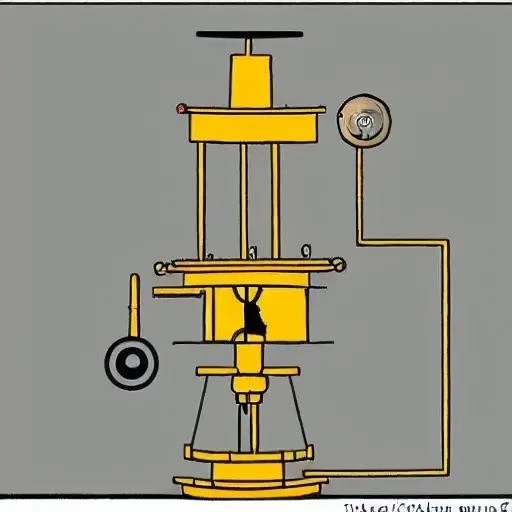In the vast, intricate symphony of automotive engineering, countless components toil in anonymity, performing their vital roles far from the limelight․ Among these unsung heroes, the car engine oil drainer – a seemingly simple plug and its accompanying tools – has long been considered a mere utility, a necessary evil in the often-messy ritual of an oil change․ Yet, as we stand in October 2025, a profound, silent revolution is underway beneath the chassis of millions of vehicles worldwide, fundamentally transforming how we approach one of the most basic, yet critical, aspects of car care․ This isn’t just about draining oil; it’s about an ingenious evolution that promises unprecedented ease, cleanliness, and efficiency for both seasoned mechanics and weekend DIY enthusiasts alike․
Historically, the routine task of replacing engine oil has been fraught with challenges․ From wrestling with stubborn, often overtightened metal drain plugs requiring precisely sized socket wrenches to contending with hot, cascading oil and the inevitable drips and spills, it was a chore that few relished․ The risk of stripping threads, burning hands, or creating an environmental mess loomed large, often deterring car owners from performing this essential maintenance themselves․ However, propelled by relentless innovation and a keen understanding of user experience, the humble oil drainer is now emerging as a beacon of modern automotive convenience, shifting from a rudimentary component to an ingeniously designed system that simplifies the entire process dramatically․
The following table outlines key aspects and innovations surrounding the car engine oil drainer, demonstrating its evolving significance in vehicle maintenance:
| Feature | Description |
|---|---|
| Topic Focus | Innovations in Car Engine Oil Drainage Systems and Tools |
| Traditional Challenges | Messy oil changes, stripped drain plug threads, incorrect tool usage, environmental concerns regarding improper used oil disposal, safety risks from hot oil․ |
| Key Innovations | Plastic oil drain plugs (often single-use), specialized T-handle removers for plastic plugs, Fumoto Valve (quick drain system), Magnetic oil drain plug removers (anti-scald, secure grip)․ |
| Benefits of Modern Tools | Significantly faster and cleaner oil changes, reduced risk of damaging oil pans or plugs, enhanced safety for users, improved accessibility for DIY maintenance, greater environmental responsibility through simplified oil collection․ |
| Vehicle Compatibility | Plastic plugs are increasingly found on models from BMW, DAF, Ford, GM, MAN, Mercedes, PSA, and VAG․ Fumoto Valves and magnetic removers offer broad compatibility across various makes and models․ |
| Reference Resource | HowStuffWorks Auto Maintenance Guide |
At the forefront of this transformation are several groundbreaking innovations․ The most prominent, perhaps, is the widespread adoption of plastic oil drain plugs, particularly by European manufacturers like Volkswagen, Audi, BMW, and Mercedes, but also by Ford and GM․ These specially designed plastic plugs, often requiring bespoke T-handle remover tools, eliminate the need for traditional wrenches and dramatically reduce the risk of stripping delicate aluminum oil pan threads․ Their precision fit ensures a secure seal, and their single-use nature, while initially controversial, guarantees a fresh, undamaged plug with every oil change, preventing leaks that often plagued older metal designs․ This shift represents a commitment to material science, crafting components that are both lightweight and incredibly effective․
Beyond the plastic revolution, ingenious solutions like the Fumoto Valve are redefining convenience․ This innovative replacement for the stock oil drain plug allows for mess-free oil changes with a simple lever turn, obviating the need for any tools․ It’s like turning a complex plumbing task into opening a faucet – remarkably simple and clean․ Similarly, magnetic oil drain plug removers, designed with anti-scald features, offer a secure grip on metal plugs, preventing accidental drops into hot oil and ensuring a cleaner, safer extraction․ By integrating insights from advanced ergonomic design and user safety, these tools are not merely functional; they are thoughtfully engineered solutions to persistent problems․
The benefits extend far beyond mere convenience․ Faster, cleaner oil changes translate into time savings for professional garages, boosting productivity and customer satisfaction․ For the burgeoning community of DIY mechanics, these innovations democratize car maintenance, making a once intimidating task accessible to more individuals․ Furthermore, the simplified collection of used motor oil facilitated by these systems plays a crucial role in environmental protection․ Proper disposal of used oil, preventing its contamination of soil and water, is a shared responsibility, and these tools are proactively helping car owners meet this obligation with greater ease and confidence․
Looking ahead, the trajectory for the car engine oil drainer is undeniably optimistic․ We can anticipate further integration with smart vehicle diagnostics, perhaps even sensor-equipped drain plugs that monitor oil quality or level․ The drive towards electric vehicles might seem to diminish the importance of engine oil, but the sheer volume of internal combustion engine vehicles on the road – an estimated 1․644 billion cars globally as of January 2025 – ensures that efficient and sustainable oil changes will remain a critical concern for decades to come․ Manufacturers, continuously responding to market demands for greater efficiency and user-friendliness, will keep pushing the boundaries, ensuring that this small, vital component continues its quiet evolution․






